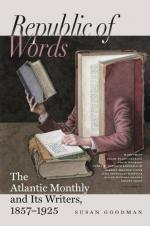It was her first industrial school that awakened the admiration of the public, which had never ceased to take an interest in her, while sorely misjudging her character. We hear much now—and everybody hears it with pleasure—of the spread of education in “common things.” But, long before Miss Coutts inherited her wealth, long before a name was found for such a method of training, Lady Byron had instituted the thing, and put it in the way of making its own name. She was living at Ealing, in Middlesex, in 1834; and there she opened one of the first industrial schools in England, if not the very first. She sent out a master to Switzerland, to be instructed in De Fellenburg’s method. She took on lease five acres of land, and spent several hundred pounds in rendering the buildings upon it fit for the purposes of the school. A liberal education was afforded to the children of artisans and laborers, during the half of the day when they were not employed in the field or garden. The allotments were rented by the boys, who raised and sold produce which afforded them a considerable yearly profit, if they were good workmen. Those who worked in the field earned wages,—their labor being paid by the hour, according to the capability of the young laborer. They kept their accounts of expenditure and receipts, and acquired good habits of business, while learning the occupation of their lives. Some mechanical trades were taught, as well as the arts of agriculture. Part of the wisdom of the management lay in making the pupils pay. Of one hundred pupils, half were boarders. They paid little more than half the expense of their maintenance; and the day-scholars paid three-pence per week. Of course, a large part of the expense was borne by Lady Byron, besides the payments she made for children who could not otherwise have entered the school. The establishment flourished steadily till 1852, when the owner of the land required it back for building-purposes. During the eighteen years that the Ealing schools were in action, they did a world of good in the way of incitement and example. The Poor-Law Commissioners pointed out their merits. Land-owners and other wealthy persons visited them, and went home and set up similar establishments. During those years, too, Lady Byron had herself been at work in various directions, to the same purpose.




